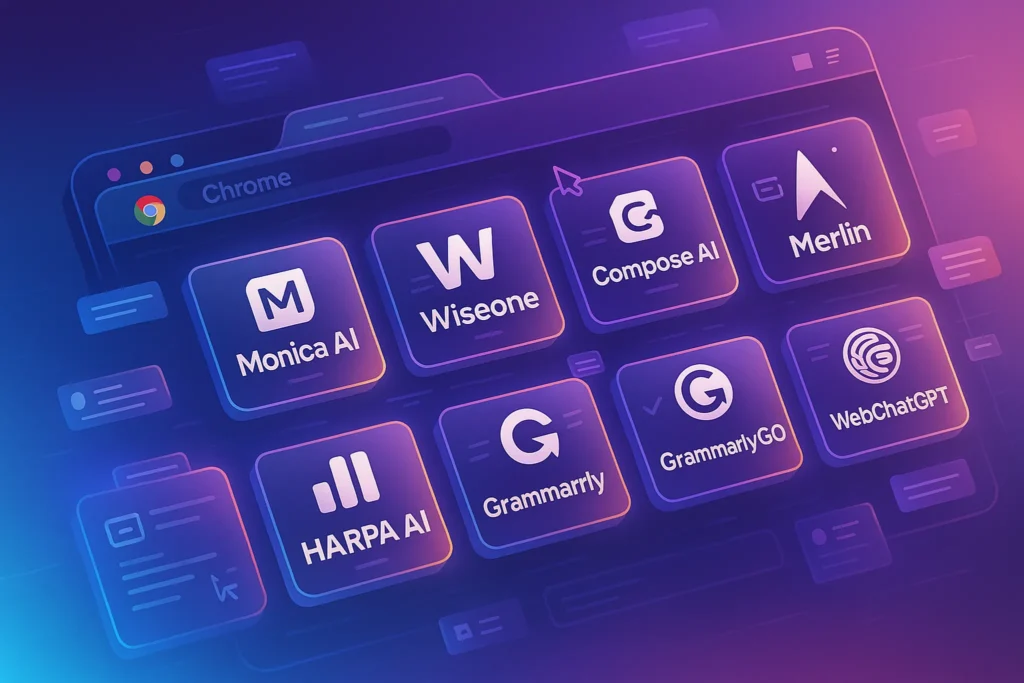🚀 Intro: Why Hidden Tools Are a Power User’s Secret Weapon
The best tech isn’t always the most popular.
While millions use the same mainstream productivity and system tools, true tech enthusiasts know the real magic often lies in the obscure, overlooked apps that solve very specific problems brilliantly.
Whether you’re a power user, early adopter, or just love exploring the bleeding edge of utility—this hand-picked set of hidden gem apps will seriously level up your digital experience.
Let’s unlock your new favorites.
1. Raycast – Spotlight, But Smarter (macOS)
🔍 Think of Raycast as Spotlight search… on quantum steroids. It’s a blazingly fast launcher for macOS that integrates deep with your system, apps, and even APIs.
What It Does:
-
Launch apps, files, and commands instantly
-
Run scripts, webhooks, or integrations
-
Use extensions from a growing community (e.g., Jira, Notion, GitHub)
-
Float commands over any window with keyboard control
Use Case:
You’re coding, and with two keystrokes you open Jira, run a build script, check your calendar, or ping Slack—all from Raycast.
✅ Pros: Lightning-fast, extensible, keyboard-first workflow
❌ Cons: Mac-only, steep learning curve for non-power users
Want a broader toolkit? Check out the Top Chrome Extensions I Can’t Live Without to complement Raycast’s desktop magic.
2. Notion AI Autofill + Formulas – AI for Databases
🧠 Most know Notion for notes and wikis—but its AI-assisted formulas and autofill features are still under the radar.
What It Does:
-
Uses AI to generate custom entries, tags, and summaries
-
Fills tables based on contextual logic (e.g., categorize tasks, label sentiment)
-
Enhances Notion’s database power without complex scripting
Use Case:
Manage a massive idea bank for content creation, with AI auto-filling status, priority, and even deadlines.
✅ Pros: Seamless integration into Notion workflow
❌ Cons: Requires paid plan for full AI access
Related read: Explore how these tools compare in Free vs Paid Productivity Tools to get maximum ROI.
3. Tana – The “Thinking” App for Networked Productivity
🧬 Tana is like a futuristic mashup of Notion, Obsidian, and Roam—with built-in automation and context-aware notes.
What It Does:
-
Auto-tags and classifies content as you type
-
Context-linked daily notes, meeting capture, project views
-
Live queries to filter anything in real time
Use Case:
You’re planning a product roadmap. Tana connects tasks to meetings, people, and research notes—automatically.
✅ Pros: Incredible for nonlinear thinkers, thinkers who map
❌ Cons: Invite-only (as of now), learning curve
Looking for alternatives? Our New Productivity Apps Worth Trying list includes tools with similar edge.
🧰 Love Tools That No One Else Uses (Yet)?
Join 1,000+ other early adopters who receive curated hidden gems every month.
🔹 Discover AI hacks, privacy-friendly apps, and pro-level utilities
🔹 Learn how to stack underrated tools for real-life impact
🔹 Get exclusive walkthroughs and future-ready tech tips
Subscribe to the Hidden Tools Brief — built for the curious and the creative.
🔐 100% privacy. No noise. Just value-packed content tips from NerdChips.
4. Whisper Desktop GUI – Transcription Made Local & Private
🎙️ Whisper by OpenAI is already a powerful transcription model—but most users don’t know a sleek, local desktop GUI exists.
What It Does:
-
Transcribes audio files directly on your machine
-
Multi-language support with high accuracy
-
Doesn’t send data to cloud = 100% local & secure
Use Case:
You record a brainstorming session or interview. Drop the file in, get a formatted transcript with timestamps—no internet needed.
✅ Pros: Privacy, accuracy, no subscription
❌ Cons: Requires some initial setup (Python/FFmpeg if CLI)
📡 Need to send files wirelessly between devices—without accounts or installs? ShareDrop is your zero-install Airdrop replacement.
What It Does:
-
P2P file transfers via browser
-
Works across OS (Linux, Android, macOS, Windows)
-
End-to-end encrypted
Use Case:
Send a 1GB file from your Linux desktop to your iPhone in seconds—without Dropbox, cables, or USB headaches.
✅ Pros: Lightweight, encrypted, no login
❌ Cons: Needs both devices open to the web page simultaneously
6. Beeper – Unified Messaging from the Future
💬 Beeper brings all your chats—iMessage, WhatsApp, Signal, Instagram, Telegram, Slack, Discord—into one universal inbox.
What It Does:
-
Unified chat inbox across platforms
-
Works on desktop and mobile
-
Uses bridges to connect iMessage (even on Android)
Use Case:
Manage client messages, team updates, and friend chats—all in one slick dashboard.
✅ Pros: Massive time-saver for comms-heavy users
❌ Cons: Subscription required, bridges may have occasional bugs
7. Jiffy Reader – Speed Reading, Everywhere
📖 Want to double your reading speed on websites? Jiffy Reader uses Bionic Reading-style bolding to enhance focus and retention.
What It Does:
-
Chrome extension that reformats text for speed reading
-
Works on articles, emails, PDFs, blog posts
-
Customize bold ratios and line spacing
Use Case:
Power through 10 articles in 30 minutes, retaining more than skimming ever allowed.
✅ Pros: Open-source, lightweight, instant productivity boost
❌ Cons: Doesn’t work well on image-based text or videos
🔗 Like minimalist tools? See our Ditch the Subscriptions: Best Open Source Productivity Apps guide.
8. WavTool – AI Music Composition in Your Browser
🎼 WavTool brings professional music production + AI co-creation into your browser—no DAW installs required.
What It Does:
-
Compose, arrange, and mix music in a web-based DAW
-
Includes Conductor AI for composition help
-
Export stems or full tracks
Use Case:
You’re experimenting with AI-generated music for a YouTube intro or game—WavTool gives you a sandbox to try it in minutes.
✅ Pros: Cloud-based, beginner-friendly, free tier
❌ Cons: Not as deep as pro DAWs like Ableton
🧠 Why Hidden Gem Apps Matter in the Age of Overload
In today’s saturated app landscape, choosing the right tool isn’t just about features—it’s about focus. Popular apps often become bloated with features aimed at the average user, while hidden gem apps tend to serve highly specific, power-oriented use cases with elegance and minimalism.
These niche tools:
-
Often respect your privacy more
-
Work faster by avoiding unnecessary complexity
-
Let you own your workflows instead of adapting to someone else’s vision
📌 Choosing underrated tools isn’t about being different—it’s about being efficient, intentional, and ahead of the curve.
🧪 How to Vet a Hidden Gem App Like a Power User
Not all obscure tools are worth your time. Here’s a smart checklist to evaluate whether a “hidden gem” actually deserves a place in your workflow:
✅ Open Source Signals: Check GitHub activity—frequent commits, contributors, and stars = active development
✅ Community Feedback: Browse Reddit, Hacker News, or Twitter mentions for real-world opinions
✅ Workflow Compatibility: Does it export/import data cleanly? Avoid vendor lock-in
✅ Interface Quality: Is it designed thoughtfully, or just cobbled together?
✅ Problem Fit: Does it solve something you actually need in a smarter, cleaner way?
🧠 The best tools aren’t just novel—they’re frictionless enhancements to your daily routine.
🔁 Stacking Tools: When Small Apps Build Big Workflows
One underrated strength of hidden gem apps? Composability. Unlike bloated all-in-one platforms, many of these tools do one thing extremely well—and work beautifully when combined.
Example Stack:
-
🎙️ Record a quick voice memo
-
🧠 Transcribe locally with Whisper GUI
-
💬 Organize insights into Tana
-
🚀 Launch this flow with a Raycast command
-
📡 Share final output via ShareDrop or a private cloud
This isn’t a fantasy—it’s a real, minimalist productivity system built from small, powerful parts. And that’s the essence of being a modern tech enthusiast: not collecting tools, but composing them.
🧠 Nerd Verdict
Great tech isn’t just about popularity—it’s about functionality that fits your workflow like a glove. The apps on this list weren’t chosen because they trend—they were chosen because they work brilliantly in very specific ways.
Whether you’re managing your day with keyboard automation, transcribing interviews locally, or composing music in your browser, these tools unlock a sense of creative control that mainstream apps often overlook.
💡 Real nerds don’t just use software—they explore it, tweak it, and integrate it into life like a custom circuit.
❓ FAQ: Nerds Ask, We Answer
💬 Would You Bite?
What’s the most underrated app in your toolkit that no one else talks about?
Drop your favorite hidden gem below—we might feature it in the next roundup 👇



